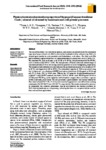Por favor, use este identificador para citar o enlazar este ítem:
http://www.alice.cnptia.embrapa.br/alice/handle/doc/1049137Registro completo de metadatos
| Campo DC | Valor | Lengua/Idioma |
|---|---|---|
| dc.contributor.author | TORRES, L. R. O. | pt_BR |
| dc.contributor.author | SHINAGAWA, F. B. | pt_BR |
| dc.contributor.author | ARAÚJO, E. S. | pt_BR |
| dc.contributor.author | OROPEZA, M. V. C. | pt_BR |
| dc.contributor.author | MACEDO, L. F. L. | pt_BR |
| dc.contributor.author | ALMEIDA-MURADIAN, L. B. | pt_BR |
| dc.contributor.author | LIMA, H. C. de | pt_BR |
| dc.contributor.author | MANCINI-FILHO, J. | pt_BR |
| dc.date.accessioned | 2016-07-19T11:11:11Z | pt_BR |
| dc.date.available | 2016-07-19T11:11:11Z | pt_BR |
| dc.date.created | 2016-07-19 | pt_BR |
| dc.date.issued | 2016 | pt_BR |
| dc.identifier.citation | International Food Research Journal, v. 23, n. 4, p. 1541-1551, 2016. | pt_BR |
| dc.identifier.uri | http://www.alice.cnptia.embrapa.br/alice/handle/doc/1049137 | pt_BR |
| dc.description | Abstract: The aim of this study is to characterize physical and chemically and determine the antioxidant capacity of pequi almond oils (PAO) extracted by handmade and by cold-pressing. Both oils showed good quality by acid, peroxide and thiobarbituric acid values. The fatty acid (FA) profile showed a significant presence of monounsaturated FA, mainly oleic acid (53.48 to 55.41%); saturated FA, such as palmitic acid (33.30 to 35.89 %); and polyunsaturated FA (PUFA), such as linoleic acid (5.85 to 7.23%). The total phenolic (TP) and carotenoid content ranged in concentration from 87.56 to 392.00 mg GAE/100 g and 36.03 to 262.40 mg/100 g, respectively. The tocopherol and phytosterol results indicated the predominant presence of α-tocopherol (52 to 67%) and stigmasterol (63 to 68 %). The antioxidant capacity of PAO as measured using the 2,2-diphenyl-1-picrylhydrazyl (DPPH?) method oscillated from 58.48 mg/mL to 76.46 mg/mL (IC50), from 10.61 to 40.46 µmol TE/g by the 2,2′-azino-bis (3-ethylbenzothiazoline-6-sulphonic acid) (ABTS?+) method, and from 113.93 to 280.85 µmol TE/100 g and 164.49 to 277.86 µmol TE/100 g, by the lipophilic and hydrophilic oxygen radical absorbance capacity (ORAC) methods, respectively. The oils presented a good oxidative and thermal stability by Rancimat method (IP of 7.33 a 15.91 h) and curves thermogravimetric and differential scanning calorimetry (To 337-363 °C and 159-184 °C, respectively). The results confirmed the presence of compounds that conferred antioxidant capacity and oxidative and thermal resistance for PAO made by handmade or cold-pressing, indicating that these oils can potentially be used for food and non-food applications. | pt_BR |
| dc.language.iso | eng | eng |
| dc.rights | openAccess | eng |
| dc.subject | Óleo de amêndoa | pt_BR |
| dc.subject | Processo artesanal | pt_BR |
| dc.subject | Prensado a frio | pt_BR |
| dc.title | Physicochemical and antioxidant properties of the pequi (Caryocar brasiliense Camb.) almond oil obtained by handmade and cold-pressed processes. | pt_BR |
| dc.type | Artigo de periódico | pt_BR |
| dc.date.updated | 2016-07-19T11:11:11Z | pt_BR |
| dc.subject.thesagro | Antioxidante | pt_BR |
| dc.subject.thesagro | Propriedade Físico-Química | pt_BR |
| dc.subject.thesagro | Pequi | pt_BR |
| dc.subject.nalthesaurus | Almond oil | pt_BR |
| riaa.ainfo.id | 1049137 | pt_BR |
| riaa.ainfo.lastupdate | 2016-07-19 | pt_BR |
| dc.contributor.institution | USP; USP; USP; USP; USP; USP; HERBERT CAVALCANTE DE LIMA, CPAC; USP. | pt_BR |
| Aparece en las colecciones: | Artigo em periódico indexado (CPAC)  | |
Ficheros en este ítem:
| Fichero | Descripción | Tamaño | Formato | |
|---|---|---|---|---|
| Torresetal2016.pdf | 484.49 kB | Adobe PDF |  Visualizar/Abrir |









